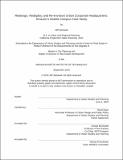| dc.contributor.advisor | Brent Ryan. | en_US |
| dc.contributor.author | Jamawat, Jeff. | en_US |
| dc.contributor.other | Massachusetts Institute of Technology. Department of Urban Studies and Planning. | en_US |
| dc.contributor.other | Massachusetts Institute of Technology. Center for Real Estate. Program in Real Estate Development. | en_US |
| dc.coverage.spatial | n-us-wa | en_US |
| dc.date.accessioned | 2020-02-28T20:52:44Z | |
| dc.date.available | 2020-02-28T20:52:44Z | |
| dc.date.copyright | 2019 | en_US |
| dc.date.issued | 2019 | en_US |
| dc.identifier.uri | https://hdl.handle.net/1721.1/123958 | |
| dc.description | This electronic version was submitted by the student author. The certified thesis is available in the Institute Archives and Special Collections. | en_US |
| dc.description | Thesis: M.C.P., Massachusetts Institute of Technology, Department of Urban Studies and Planning, 2019 | en_US |
| dc.description | Thesis: S.M. in Real Estate Development, Massachusetts Institute of Technology, Program in Real Estate Development in conjunction with the Center for Real Estate, 2019 | en_US |
| dc.description | Cataloged from student-submitted PDF version of thesis. | en_US |
| dc.description | Includes bibliographical references. | en_US |
| dc.description.abstract | Corporate headquarters have tremendous impacts on cities and the built environment. As companies expand, downsize, and adapt through the business cycles and industry transformations, the size of corporate workforce and real estate holdings are in constant flux, resulting in a dynamic urban system that continues to shape and reshape physical planning and urban morphologies of cities. This thesis focuses on corporate headquarters in an urban environment where the main campus is physically located in the downtown core or near the central business district. Using Amazon campus in Seattle as a case study, the research investigates past experiences in adaptive reuse of signature corporate headquarters in the US, explores Amazon growth and its impacts on urbanism, and develops a custom-built app that visualizes Amazon-occupied office space in Seattle to inform re-tenant and real estate disposition strategies in a futuristic scenario where Amazon shifts the activity center away from the downtown area. Local and regional planning agencies could potentially use this research as a framework for future economic resilience planning initiatives and dialogues. | en_US |
| dc.description.statementofresponsibility | by Jeff Jamawat. | en_US |
| dc.format.extent | 115 pages | en_US |
| dc.language.iso | eng | en_US |
| dc.publisher | Massachusetts Institute of Technology | en_US |
| dc.rights | MIT theses are protected by copyright. They may be viewed, downloaded, or printed from this source but further reproduction or distribution in any format is prohibited without written permission. | en_US |
| dc.rights.uri | http://dspace.mit.edu/handle/1721.1/7582 | en_US |
| dc.subject | Urban Studies and Planning. | en_US |
| dc.subject | Center for Real Estate. Program in Real Estate Development. | en_US |
| dc.title | Redesign, redeploy, and re-envision urban corporate headquarters : Amazon's Seattle campus case study | en_US |
| dc.type | Thesis | en_US |
| dc.description.degree | M.C.P. | en_US |
| dc.description.degree | S.M. in Real Estate Development | en_US |
| dc.contributor.department | Massachusetts Institute of Technology. Department of Urban Studies and Planning | en_US |
| dc.contributor.department | Massachusetts Institute of Technology. Center for Real Estate. Program in Real Estate Development | en_US |
| dc.contributor.department | Massachusetts Institute of Technology. Center for Real Estate | |
| dc.identifier.oclc | 1140446657 | en_US |
| dc.description.collection | M.C.P. Massachusetts Institute of Technology, Department of Urban Studies and Planning | en_US |
| dc.description.collection | S.M.inRealEstateDevelopment Massachusetts Institute of Technology, Program in Real Estate Development in conjunction with the Center for Real Estate | en_US |
| dspace.imported | 2020-02-28T20:52:43Z | en_US |
| mit.thesis.degree | Master | en_US |
| mit.thesis.department | UrbStud | en_US |
| mit.thesis.department | RED | en_US |
